Guide/Review: Peranakan Cuisine in Melaka (Nancy’s Kitchen)
Having settled the paperwork and having checked into our hotel in Melaka (also known as Malacca): The Pines Melaka, we were off for lunch. In my view (and I think such a view is shared by many others), a trip to Melaka would not be complete without having tried Peranakan cuisine.
For my foreign friends, I am generalising here when I use the word Peranakan as I am referring to Peranakan Chinese who are the descendants of Chinese immigrants who came to the Malay archipelago. If you are being technical, you can also have Indian Peranakans (aka Chitty) being the descendants of Indian immigrants who settled in the region. However, this group appears to be almost lost having been assimilated back into one of their roots (i.e. The Indian, Chinese or Malay communities).
The Peranakans being a mix of Chinese and Malay developed a cuisine that fuses elements from both ethnic groups. For example, you have the typical curries but also the use of pork (haram or forbidden in normal Malay cuisine).
For this trip, we visited Nancy’s Kitchen Restaurant (3.7 Stars on Google Review and 3.5 Stars on TripAdvisor). The restaurant is located at 13 13-1, 13-2, Jalan Kl 3/8 | Taman Kota Laksamana, Seksyen 3.


As to how we got there, the easiest option is to Uber or Grab (an Uber equivalent). Avoid the taxis if possible as most drivers there have yet settled with using the meter. Ubering or Grabbing will cost you average MYR5 per ride. Yes, it is that cheap.
When we arrived, we knew we were in the right place as there was a queue outside. The sign placed outside the restaurant directed diners to register themselves in the restaurant by writing down their contact details on a list. The restaurant staff will go down that same list and seat you accordingly. While the restaurant does accept reservations, they do not do reservations for that day itself. So, if you intend to make a reservation, please remember to do it a day before or else you will have to join the queue like I did.
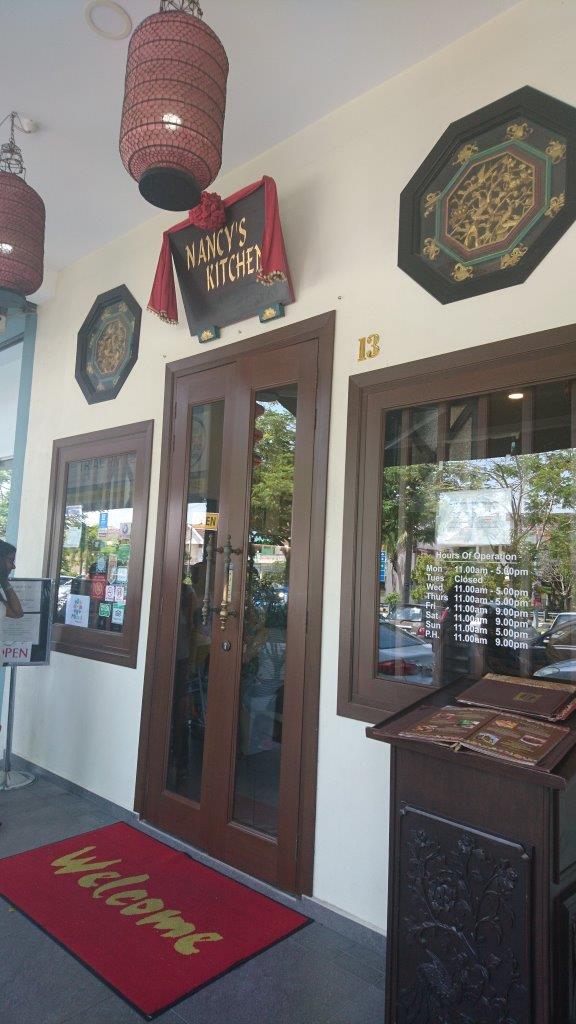
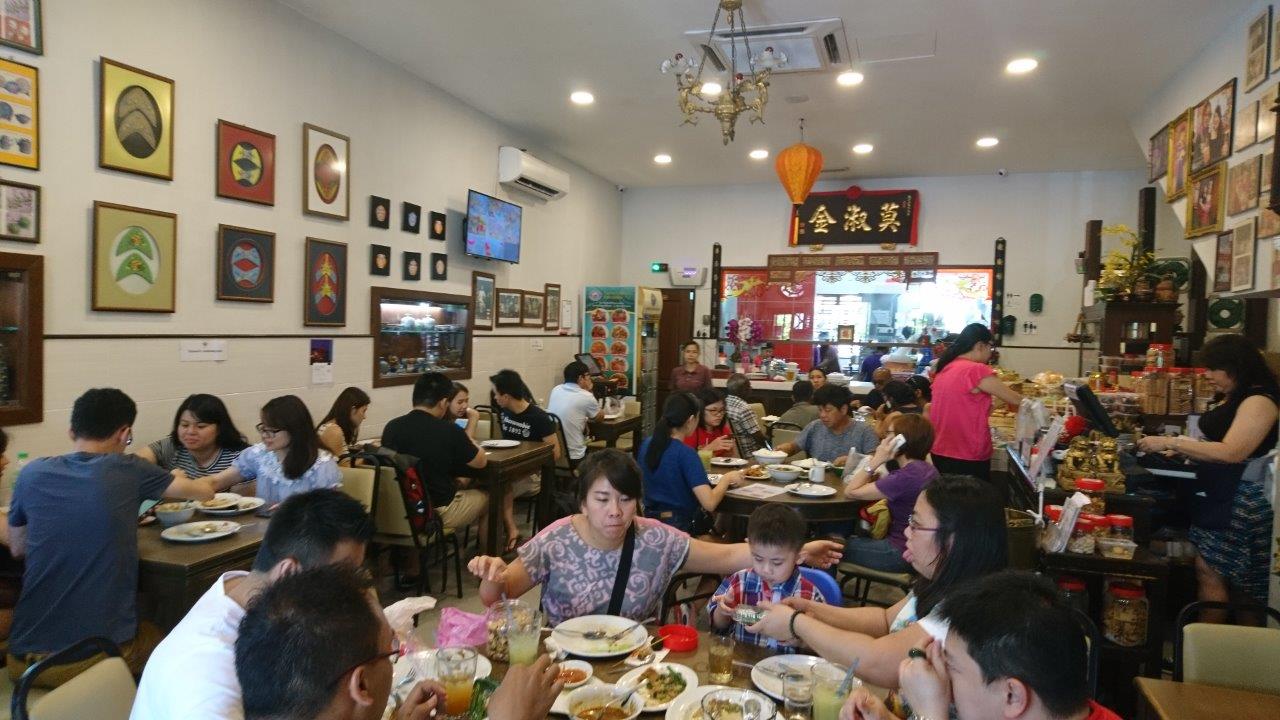
The waiting time was approximately 30 minutes for me. This allowed me sometime to roam around the block. There is a bakery just beside Nancy’s and if I weren’t as full as I was, I would have bought some of the durian pastry from them.
We were seated on the second floor.
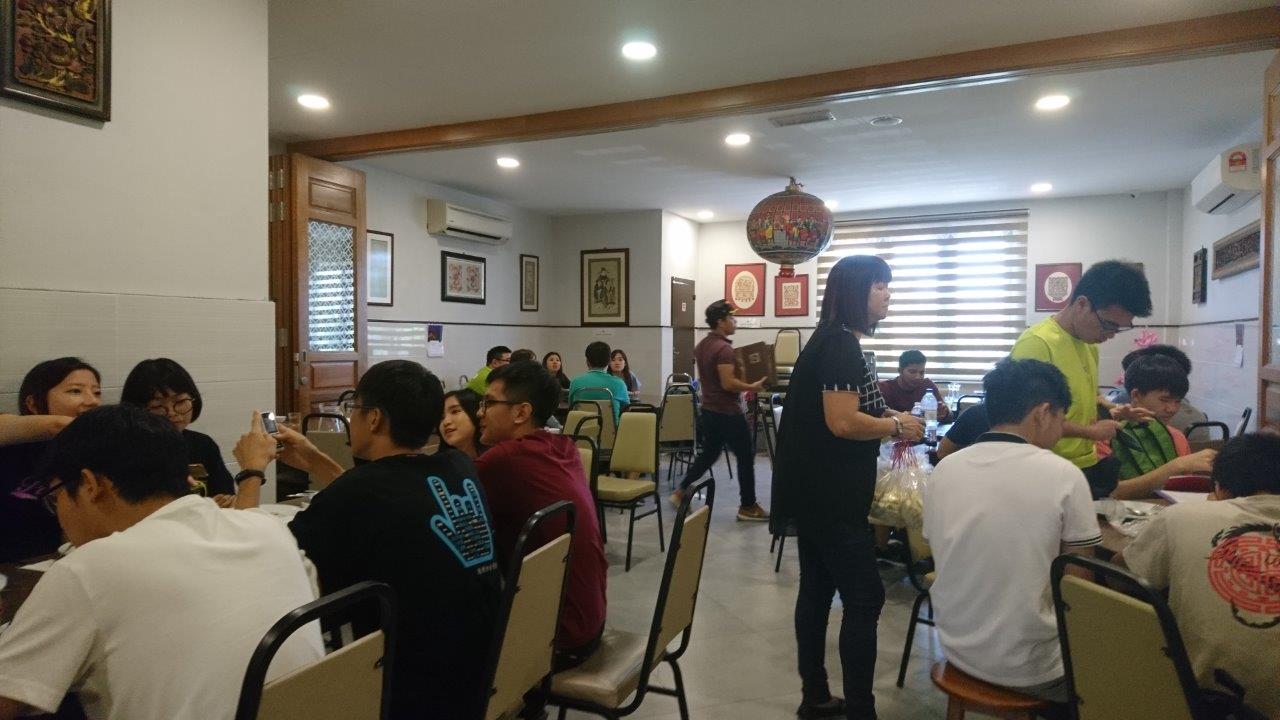
The menu was wide enough offering diners a range of different peranakan cuisine. One good thing about Nancy’s is its human traffic. The large turnover of customers ensures that they have a sufficient customer base to prepare dishes that is typically time consuming and not worth the hassle if the overall demand is low. Dishes like Babi Buah Keluak and Nangka Curry were available at Nancy’s.
The prices are affordable at approximately MYR6-8 for simpler dishes like appetizers and vegetables to MYR18 for meat dishes.
We decided to go for dishes that we normally don’t find in Singapore or are not worth its price in Singapore.
Kueh Pie Tee
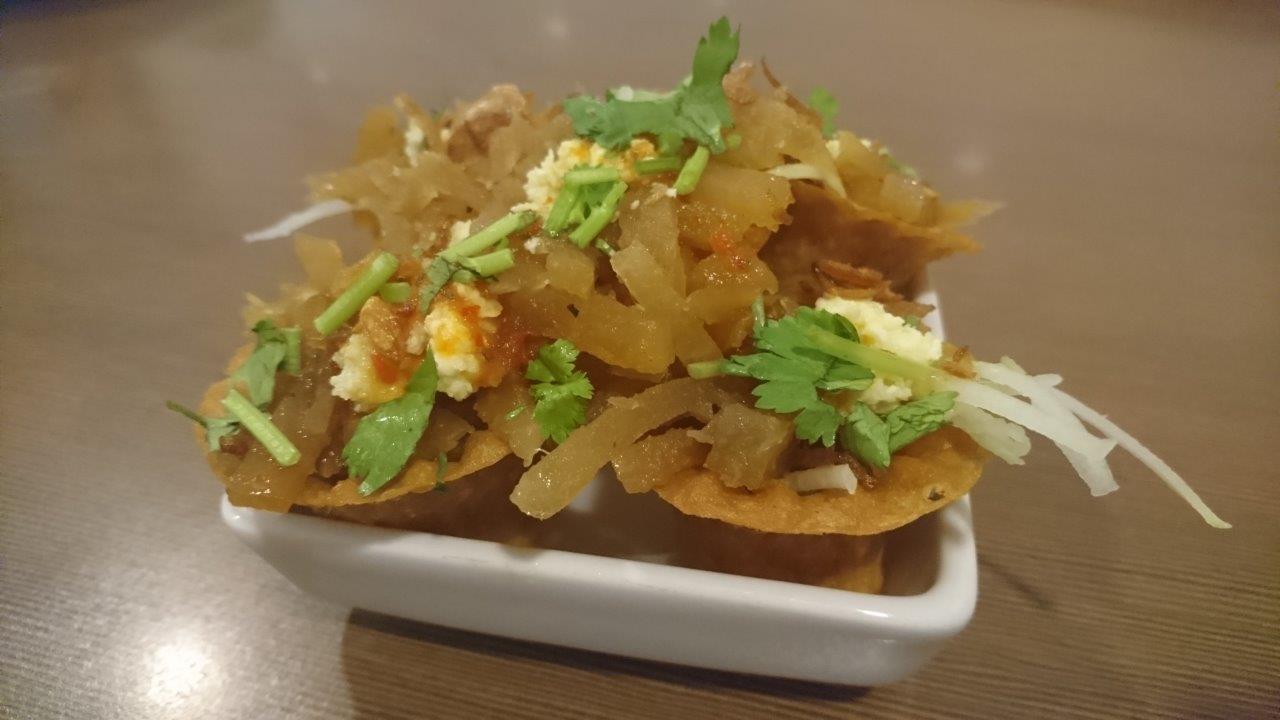
As an appetizer, we went with Kueh Pie Tees which are thin and crispy pastry tart shells filled with a spicy, sweet mixture of thinly sliced vegetables topped with a tiny dash of sambal chilli. Each bit size portion is extremely crispy but comes off as being a very light snack as a prelude to the heavyweights later.
Then came the mains. We ordered the classics like Babi Buah Keluak, Chicken Rendang, Assam Prawns, Nangka Curry and Kerabu Jantung Pisang.
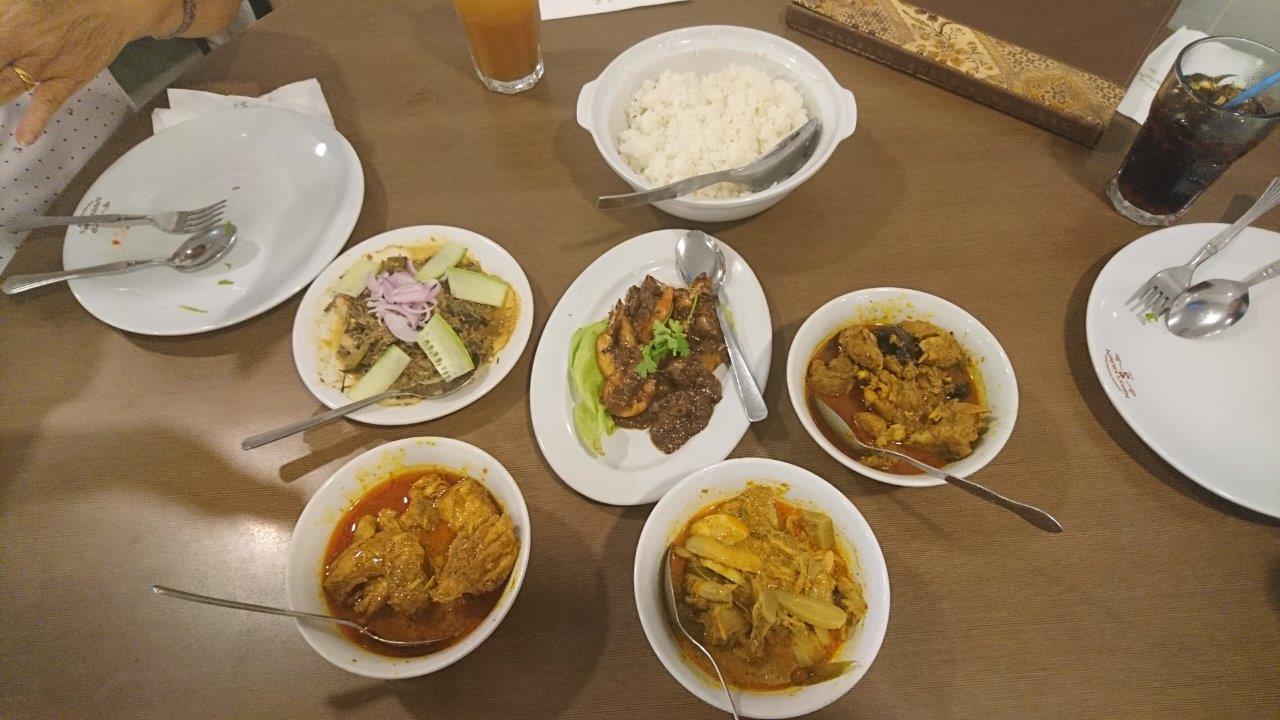
Babi Buah Keluak
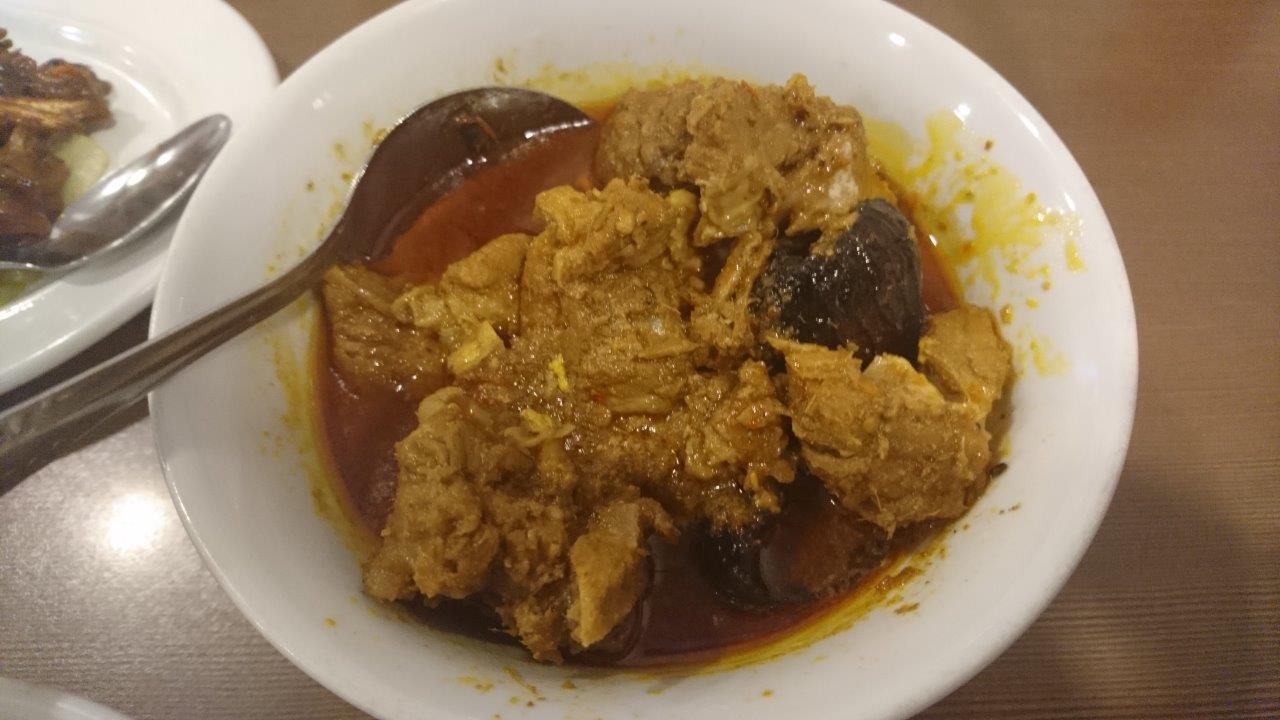
Babi means pork. So the dish is pork cooked with Buah Keluak.
Buah Keluak is the fruit of a tree native to Indonesia. The entire tree is poisonous but the seeds of the these fruits have been processed (I understand by burying them and later boiling them) to remove any toxins.
What we are after is the black nut paste within the seed. It has a strong nutty flavour (of course, this may be an acquired taste) and matches very well with rice. It was so good that in order to not waste any of this black gold, having dug out most of the paste, I backfilled the shell with rice with the hope that the rice can extract any remaining goodness.
Chicken Rendang
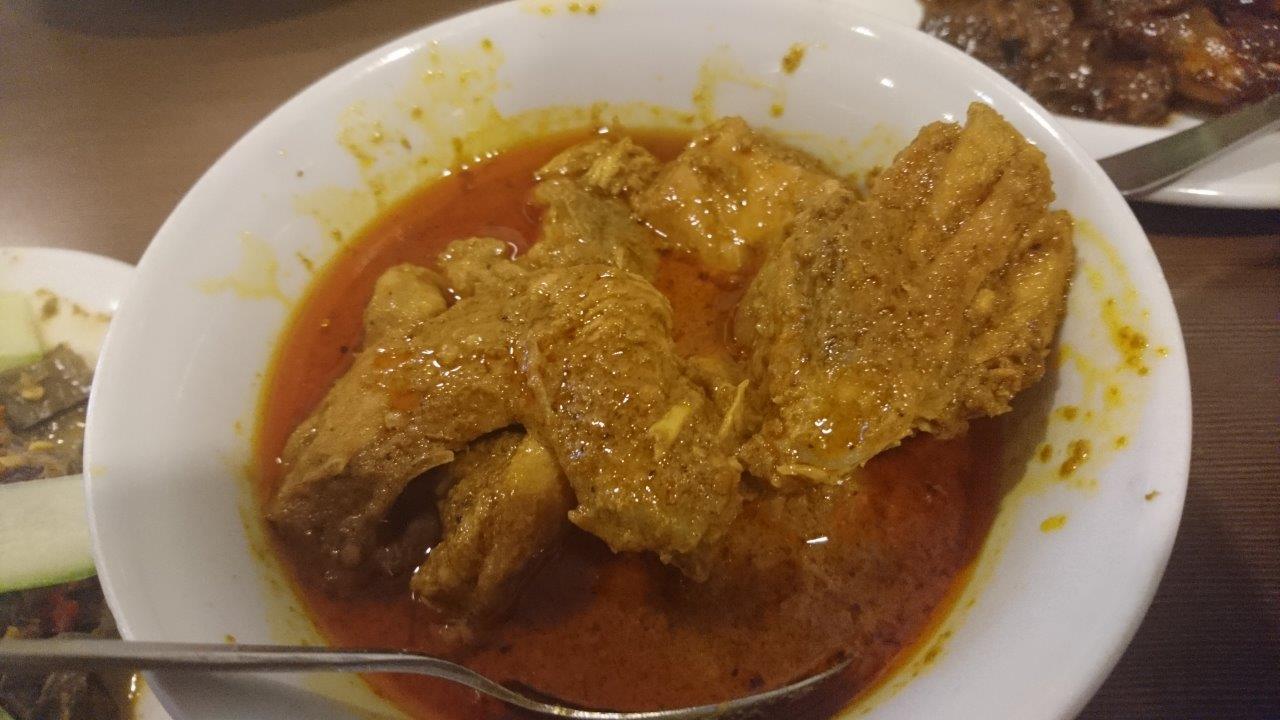
For those uninitiated, “Rendang is a popular dish of meat stewed in coconut milk and spices, commonly found in Malaysia, Singapore and Indonesia.”
Singaporeinfopedia describes it as:
The meat, usually beef but sometimes chicken or mutton, is stewed in coconut milk with spices such as ginger, chillies, galangal (blue ginger), lemongrass, garlic, shallots, kaffir lime leaves and turmeric. A wide rather than a deep pot is preferred to allow the milk to evaporate during a slow boil of up to three hours. Skill is required to ensure the liquid does not overboil and cause the milk to curdle. However, if the fire is too low, the meat could burn. Correctly cooked, the liquid will thicken into the distinctive rendang gravy. This cooking process has several purposes – it adds flavour to the meat as it is braised in the spices; it softens and tenderises the meat as the dish dries up; and it enhances the preservation of the dish, allowing it to remain edible even two to three days later without refrigeration or up to two weeks in the refrigerator. The dish is best eaten with rice and is sometimes consumed with ketupat (steamed pressed rice). It is more often served in hawker centres as one of several dishes in nasi padang.
Assam Prawns
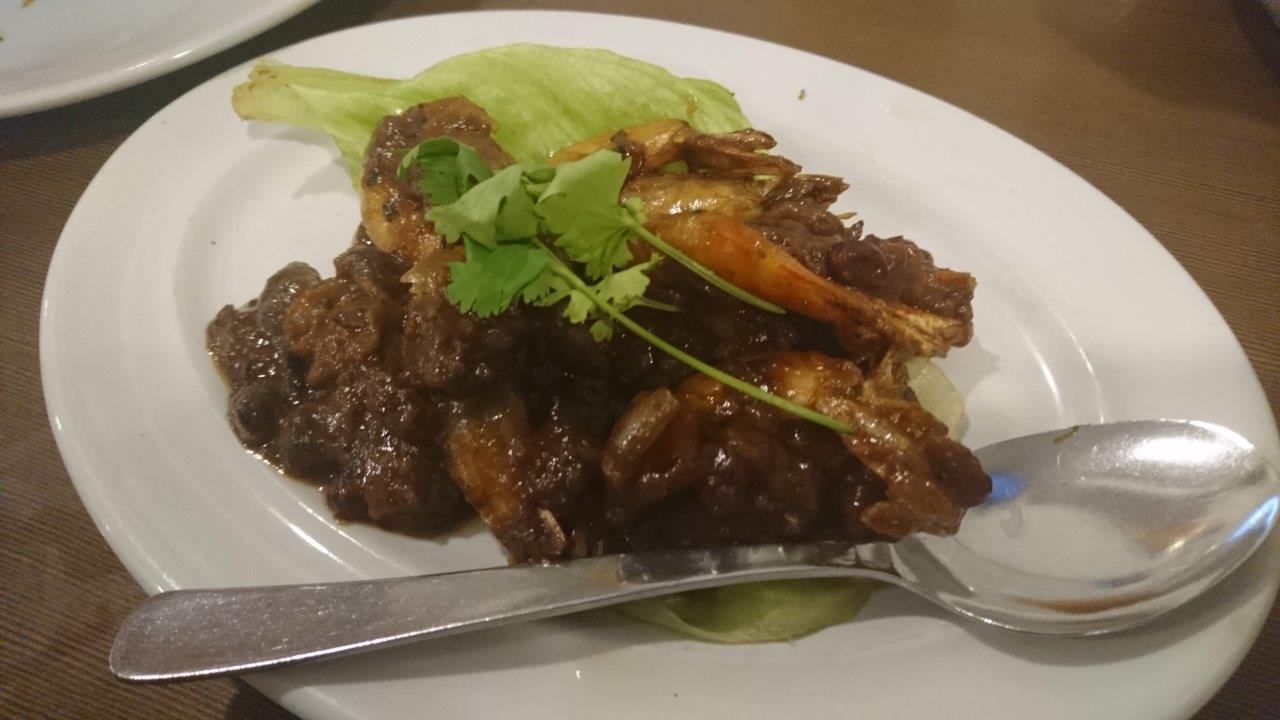
These prawns stir up your appetite as it is both slightly spicy and also slightly sourish from the tamarind. The chef left the assam seeds (tamarind seeds) which both enhances the taste and also lets the diner know that you are getting the real deal.
By now, I hope, you can see a general trend of Peranakan Cuisine which typically has very flavourful dishes with strong distinct flavours.
Nangka Curry
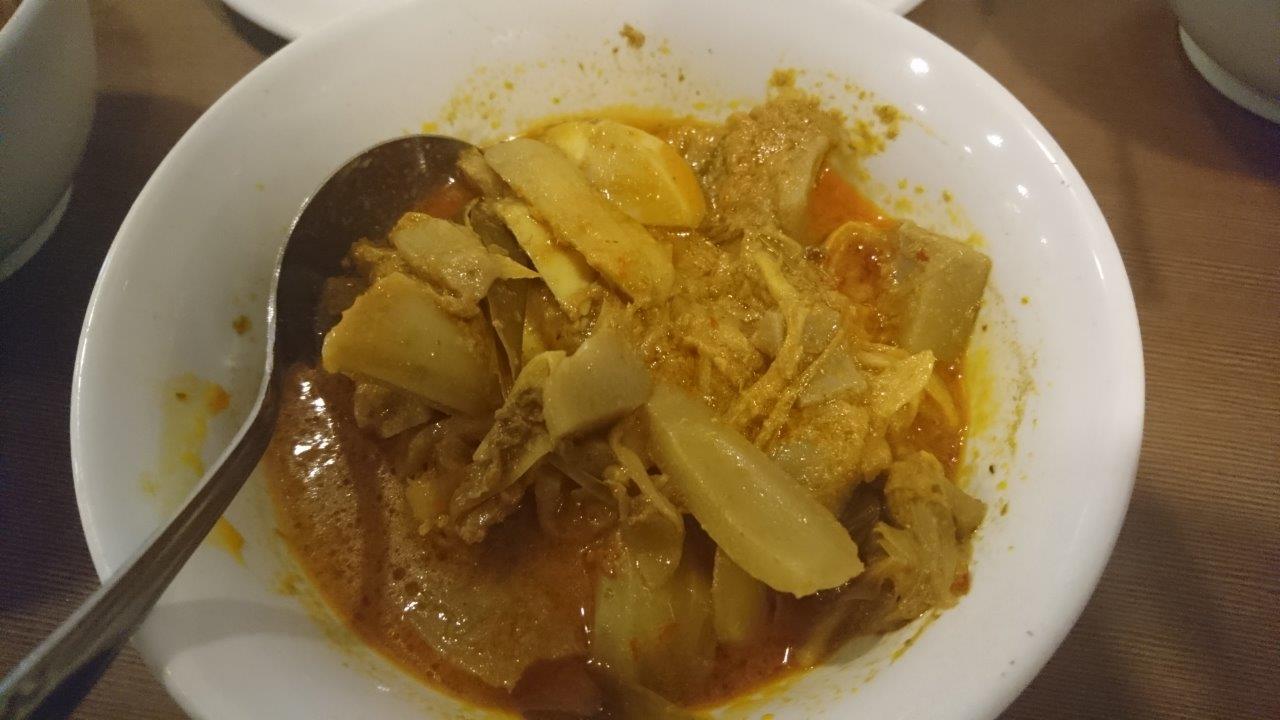
Nangka Curry or Jackfruit Curry is another interesting dish showing creative use of an ingredient normally considered as a fruit rather than a vegetable. Instead of letting the fruit mature fully, the unripe fruits are harvested and the flesh used to make type of vegetable curry. In terms of taste and texture, it has more body compared with typical vegetable curries where the vegetables become soft from the cooking process. The jackfruit retains its texture better and after the cook process is soft but not mushy.
Kerabu Jantung Pisang
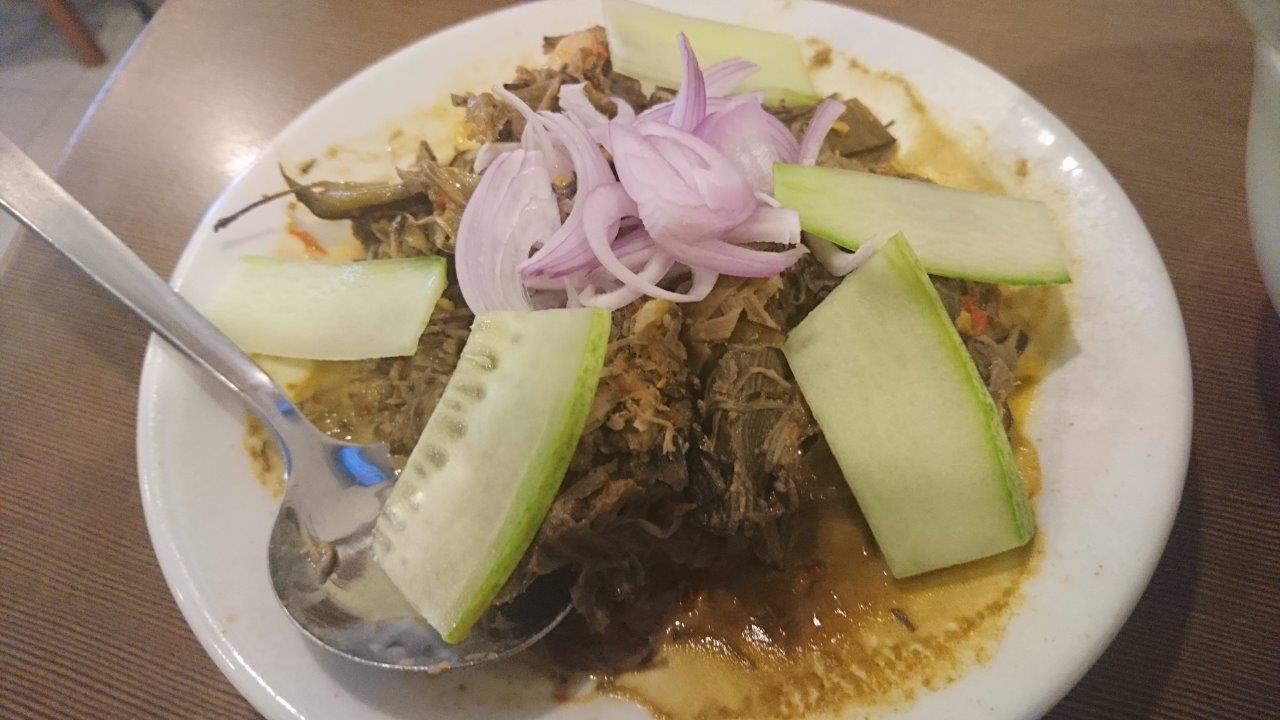
Banana blossom salad is another unique dish on the menu. If you tried banana flowers before you will know it has a very strong but refreshing taste to it. You would have tasted such flowers before if you tried Assam Laksa or Chinese Rojak. Such dishes normally come with some shavings of the banana flower.
The flower plays a different role in this dish. Instead of being a “supporting” an ingredient, the flower takes the lead role and makes up the main body of the dish. However, unlike the use of the flower shavings discussed above, the dish does not overpower the senses and was surprisingly mild in taste. Perhaps the cooking process dulls the strong taste of the flower?
Cendol
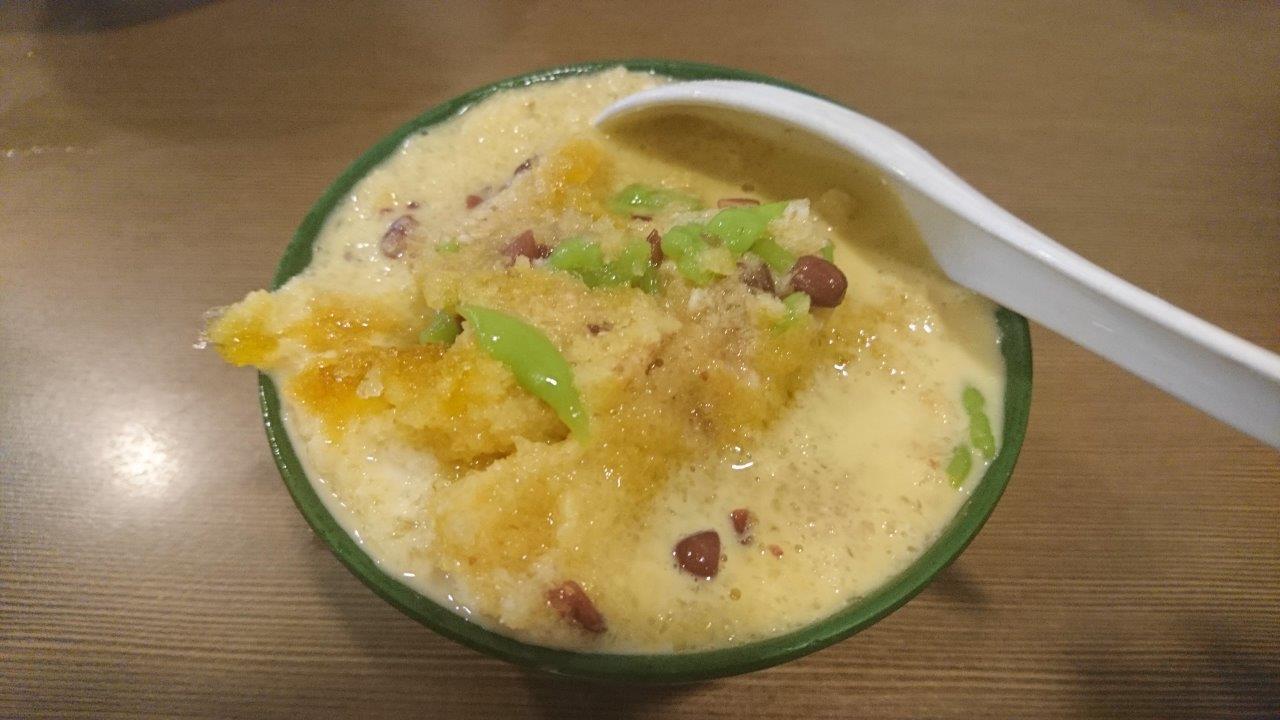
I (yes, singular as my mother and girlfriend both gave up towards the end of the meal being too full for dessert) topped up the already heavy meal with an even richer dessert: Cendol.
Cendol is a local dessert found in Southeast Asia and is normally made up of green rice flour jelly with coconut milk and palm sugar served with shaved ice. Variants include red beans, durians and jackfruit. For those interested, cece365 had in her recent blog post discussed how she made her own coconut milk. While I’m no expert, if you intend to make your own coconut milk, be sure to use the first press of the milk instead of the second press (which would be diluted).
In my humble opinion, a good bowl of cendol depends on two ingredients. The dessert must be lemak (i.e. have sufficient coconut milk) and must be doused with a generous amount of palm sugar syrup to give it a rich brown colour and flavour.
And so far, I think Melaka has one of the best cendols. Maybe its because of nostalgic reasons (I have been having good cendols since I was a young kid visiting Melaka) or maybe they have mastered the ratios.
The bowl at Nancy’s, although not the best I had, is still a pretty good bowl of cendol and if I had a bit more space I would have gone for a second bowl.
Have you tried Peranakan food before? Let me know in the comments below.
If you enjoyed reading this post, please remember to like and also click follow for more content. Thanks!!!!